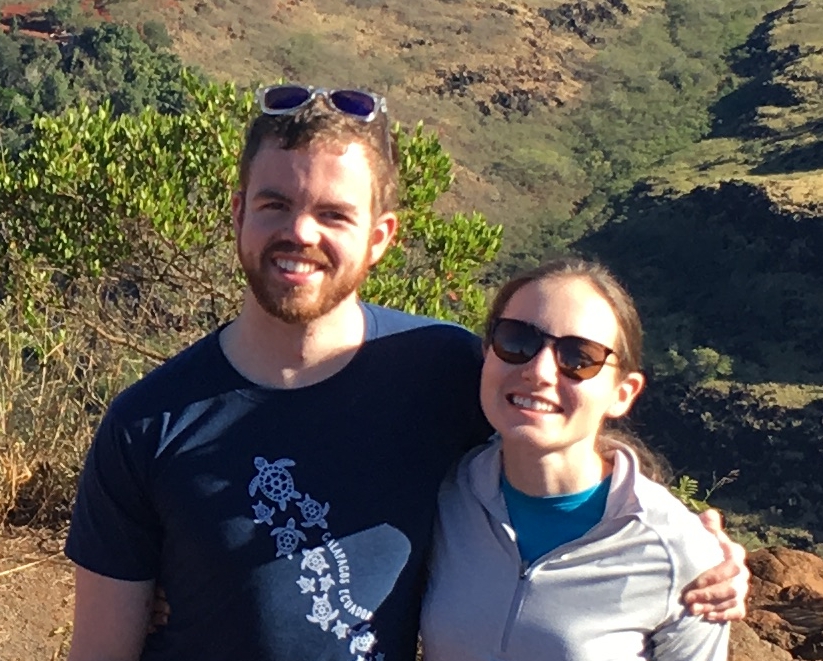Maboneng,Johannesburg - urban revival through art
'A tour of one of Johannesburg's liveliest neighborhood, with our tour guide Bright'

We grabbed an Uber from Constitution Hill to Maboneng for the "Culinary and Arts walk" we booked through AirBnB. Bright, our tour guide, met us at the agreed upon spot, and we grabbed lunch.
Another traditional South African braai
We sat down on Fox Street, the bustling center of the Maboneng neighborhood. Bright ordered us our food, and we chatted while we waited for it to come out. Bright was from a township right outside the city, still technically within Johannesburg. His first language was Zulu, which is the most common first language in South Africa. His English was perfect, and he speaks six of the other national languages of South Africa. When I asked if he spoke Afrikaans as well, his response was more or less "Kids died in 1976 in protest of Afrikaans. To hell with Afrikaans." Most Afrikaans speakers also speak English, so he never needs it.
The food arrives, and it's grilled chicken, pork loin and steak. It came with pap and chakalaka as always, and also came with a delicious spongy sweet and savory muffin. In addition, Bright divided a sausage sandwich with fries and ketchup into thirds, one for each of us. This sandwich reminded me of R U Hungry back in college, and it was delicious.
I don't see myself getting tired of this sort of meal. While we ate, the most incredible female vocalist sang soulful acapella.


The walk begins
Bright started off our tour explaining the Maboneng neighborhood. This neighborhood has become very trendy very recently. He took us back to 1994 - when apartheid ended, white folks in the inner city of Johannesburg fled in fear of black people retaliating against their previous oppressor. This white flight left a large resource and industry vacuum in the inner city, fostering poverty and crime.
In 2009, an artist moved into an empty warehouse owned by his father in Maboneng, and invited his artist and business owner friends to the warehouse. This started the Maboneng Sunday market, from which spurred growth and creativity in the area.



Bright took us into his favorite business and walked us through his favorite neighborhoods. He applauded the creativity of the members of the community, continuing the stress that human creativity is what brings us all together.
A number of business storefronts were built out of storage containers. Bright informed us that Johannesburg has a surplus of shipping containers, and business owners were able to get a great deal on them, converting them into storefronts.



They even built large apartment complexes using these shipping containers, with Bright stressing affordability.

A discussion over tea
We walked through a beautiful garden to a tea house. We sat and drank tea, and discussed travel, people and culture.




The tea was called Ubuntu, which was a black tea with vanilla and blueberry. Ubuntu is the spirit of humanity, which Bright emphasized the importance of. His excitement about the humanity of the Maboneng neighborhood and Johannesburg overall was infectious. Maboneng recently was not a safe place to be, due to empty spaces that invite drug users to spend idle time. When a neighborhood isn't full of people who care about the community, there is no system in place to take care of a neighborhood. Conversely, when spaces are filled, it gives people in the community pride in the neighborhood. When members of the community are proud of their neighborhood, they will protect it, and make examples of those who don't. The latter is what is happening in Maboneng, and Johannesburg overall. People are moving back into the inner city and forming prideful neighborhoods.
Bright used to work at the local backpacker hostle, and we dicussed how travel brings people together and encourages celebrations of differences while showing we're all more similar than we'd think. It was some kumbaya shit, in all the best ways.

The walk continues
Bright continued on the tour, walking us down colorful streets to cool art galleries. Here are some of my favorite shots of people on the street.




The art in the galleries were a mix between local works and works by foreign visitors. Bright continued to emphasize the importance of both local and foreign artists, and would call out, for example, "This artist is from Brussels. We all think it's pretty cool that he came down here to live with us and make his art." One place he took us was called Agog, which was both a bar and an art gallery, with bars on floors 1 and 4, and galleries on floors 2 and 3.

There was plenty of incredible street art as well.




We briefly ducked into the Marabi Club, a jazz club with amazing music and delicious food. Unfortunately nothing was going on at 3:30 in the afternoon, and we were busy that evening. That said, I'd be remiss not to mention it, as it seemed like an important cultural peice of the neighborhood.

Winding down the tour, Bright told us about the community initiates to foster new artists, from "I was Shot in Joburg" (a store full of indie photography from the neighborhood) to youth schools for the fine arts, to art spaces to work and sell art.
Tour End on the rooftop
We then ended at a roof top bar overlooking the city. Bright told us that when Beyonce and Jay-Z performed at Global Citizen in South Africa, they rented out the bar for their afterparty.
Bright told us that his side project is purchasing warehouse space in the area and renting it out to artists to live and create in his space. So... if any artists want to move to Maboneng, hit me up! :-)


We'd like to thank Bright, our passionate host and guide for the tour!

